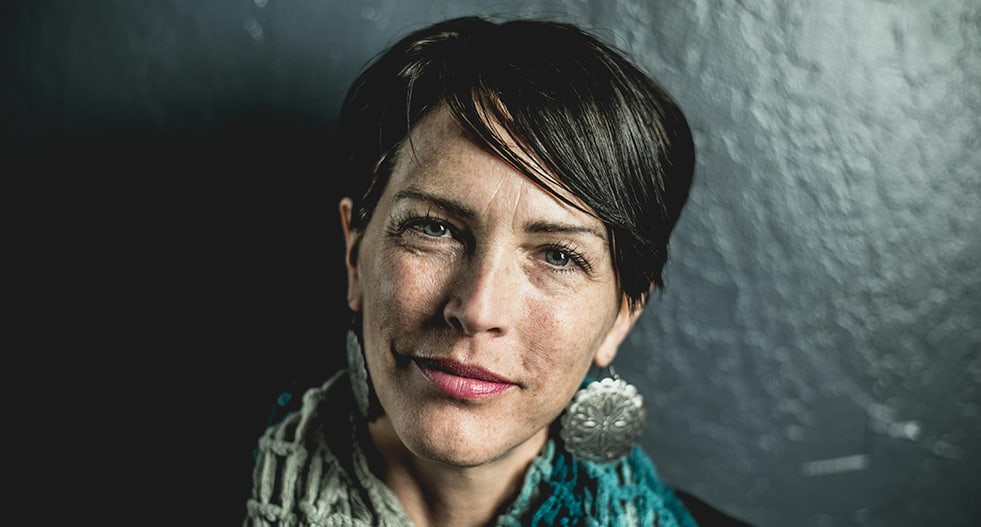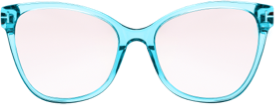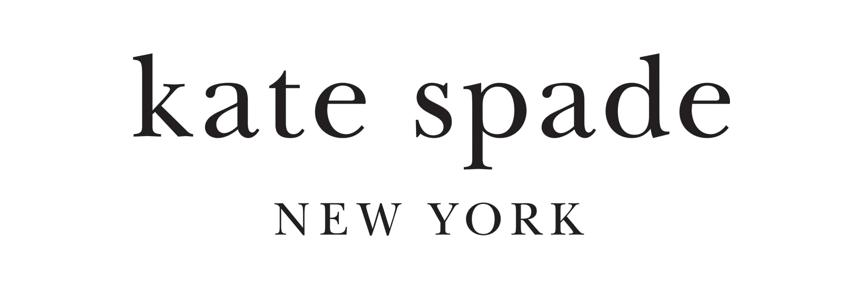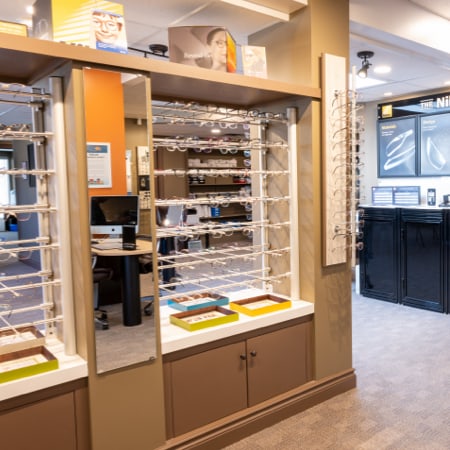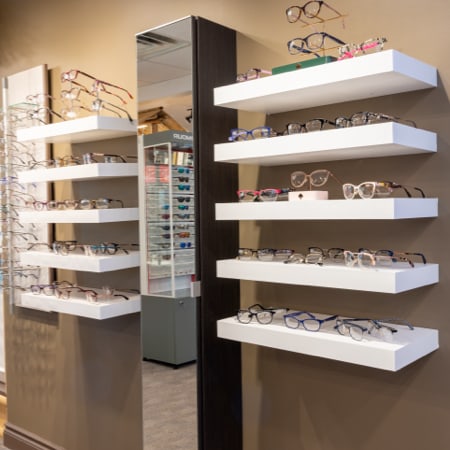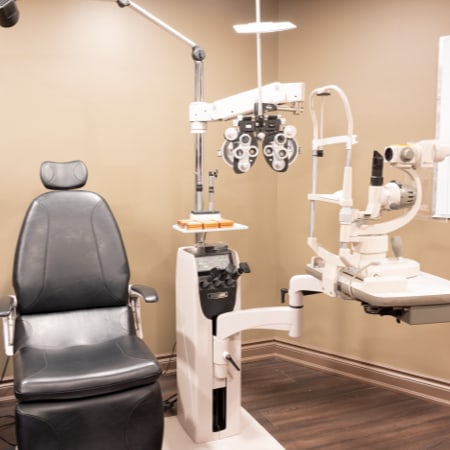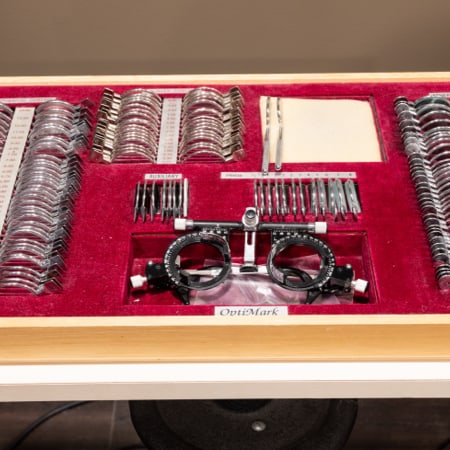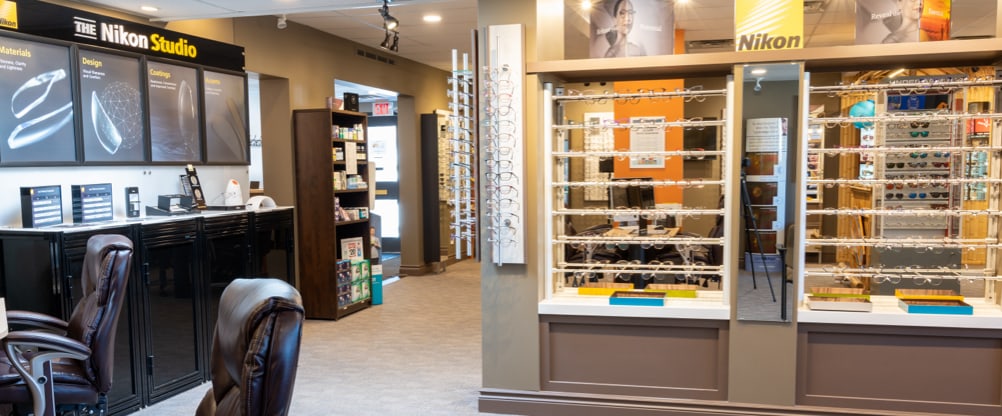Do I Have Dry Eye Disease?
If you’re living with symptoms like red eyes, stinging sensations, or even watery eyes, you may have dry eye disease—but you are not alone. Dry eye can be managed. We are prepared to help you regain your comfort.
There are 2 main types of dry eye: aqueous deficient and evaporative. If your eyes don’t produce enough tears, you may have aqueous dry eye. If your tears evaporate too quickly, you may have evaporative dry eye. There are several underlying causes that can lead to each type of dry eye.
During your next eye exam, we can help determine the underlying cause of your symptoms and provide recommendations for tailored in-office and at-home treatments.
Schedule an appointment today.
Book Appointment
Symptoms of
Dry Eye
Dry eye disease can manifest in various ways, often causing discomfort and irritation. The common symptoms include:
- Red eyes
- Stinging, burning sensations
- Blurred vision
- Fatigued eyes
- Excessive tearing
- Sensitivity to light
- Feeling as if something is in your eye
If you’re experiencing any of these symptoms, contact us. We can provide a personalized treatment plan for your dry eye.


Causes of Dry Eye Disease
Many factors can contribute to and worsen dry eye. These factors include:
- UV exposure
- Aging and hormonal changes
- Medications and antihistamines
- Environmental conditions (wind, dry air, pollution, prolonged screen time)
- Medical conditions (rheumatoid arthritis, diabetes, thyroid disease, Parkinson’s disease)
Dry eye symptoms can also be caused by inflammation in your eyelids and blockages in the glands that produce oil for your tears (meibomian glands).
Dry Eye & Digital Eye Strain
Prolonged screen time can lead to a condition called digital eye strain, which can often cause your eyes to feel dry. One possible reason for this is that people often tend to blink less when they are looking at a screen.
Reducing your screen time might not always be feasible, especially at work. However, if you’re experiencing dry eye or digital eye strain, we can help mitigate the discomfort caused by prolonged screen time.
How Does Orillia Optometry Diagnose Dry Eye Disease?
Diagnosing dry eye disease involves a thorough eye examination using modern technology and tools. This process helps us identify the underlying cause of your symptoms and tailor a treatment plan to your specific needs.
One of our diagnostic tools is the Idra dry eye device. It can provide a detailed analysis of your tear film, which gives us essential information about its structure. We can then identify the cause of your dry eye symptoms and recommend in-office treatments, at-home treatments, or a combination of both.
What Is OptiLIGHT by Lumenis?
OptiLIGHT by Lumenis is a light-based, noninvasive treatment done in the area below the eyes to manage dry eye. The first and only IPL FDA-approved for dry eye management.
The treatment is safe, gentle, and is backed by more than 20 clinical studies.
How Does It Work?
OptiLIGHT uses precise pulses of light to reduce the inflammation that is typically associated with dry eye disease, improve tear break-up time, and increase meibomian gland functionality.
This application can significantly relieve dry eye indicators and has a multi-factorial effect, including:
- Improving meibomian gland functionality
- Increasing tear break-up time
- Reducing the amount of Demodex mites and bacteria living around your eyes
- Eliminating blood vessels that contribute to inflammation
Will the OptiLIGHT by Lumenis Work for Me?
While OptiLIGHT by Lumenis is an effective dry eye management solution, we want to make sure it’s right for you. We do not recommend this treatment if you:
- Suffer from aqueous deficiency dry eye (rather than evaporative dry eye or meibomian gland dysfunction)
- Have a history of keloid scarring
- Have severe scarring around your eyes
Ultimately, your doctor is the only person who can determine whether this option is right for you. During your next appointment, ask us if you are a good candidate for OptiLIGHT by Lumenis.
In-Office Dry Eye Treatment Options
In addition to OptiLIGHT by Lumenis, we offer several in-office treatments to address dry eye disease. Depending on the cause of your symptoms, these treatments may be helpful for experiencing long-term relief.
iLux is a procedure designed to treat meibomian gland dysfunction. It gently warms the inner and outer layers of your eyelid to help melt the blockages in your glands. This treatment can be quick and comfortable and can help restore proper tear production.
Intense pulsed light (IPL) treatment uses light pulses directed at the eye area to reduce inflammation and unblock the meibomian glands. This treatment can also be quick and comfortable. Typically, IPL treatments take about 15 minutes. Multiple sessions are often necessary for achieving and maintaining lasting dry eye relief.
At-Home Dry Eye Treatment Options
We offer various at-home treatments to address dry eye disease. Our team selected these treatments because they’re backed by science and clinical studies. Our goal is to provide you with convenient treatment options to help manage your dry eye symptoms.
For some people, omega-3 fatty acids may improve tear film quality and help prevent dry eye symptoms. Omega 3 supplements from PRN (Physician Recommended Nutriceuticals) are designed to help those experiencing chronic dry eye symptoms find relief.
Based on your personal health and the underlying cause of your symptoms, we may recommend these for at-home dry eye care.
These supplements have been evaluated by Health Canada for managing dry eye symptoms.
Bruder masks provide gentle, warming heat to help manage dry eye symptoms caused by meibomian gland dysfunction and blepharitis. The mask is warmed in the microwave and placed over your eyes to provide temporary dry eye relief.
Ocunox eye ointment can offer overnight eye protection by helping protect your cornea and improve your tear film while you sleep.
This preservative-free ointment contains Vitamin A to help further enhance tear film stability and prevent dry eye symptoms.
If your dry eye is caused by allergies, Zaspray may be an ideal treatment option. It’s a 3-in-1 spray that soothes and hydrates your eyes and can help you manage discomfort, irritation, and redness.
These preservative-free sterile lid wipes can help manage the symptoms of blepharitis. We recommend using these wipes 1–2 times daily per week since they can be a convenient way to maintain eye hygiene.
Thealoz Duo eye drops are designed to help protect and hydrate your eyes. These drops can increase tear film thickness for up to 4 hours, which can help manage moderate to severe dry eye.
Zocular Eyelid System Treatment (ZEST) can help remove bacteria, debris, oil, and residue from the eyelids. Through gentle exfoliation, ZEST can help manage your dry eye symptoms by removing debris that can clog your tear glands.
Zocular foam is an eyelid cleanser formulated with okra complexes. The foaming formula can remove debris from your lids and lashes, which can help you manage dryness and discomfort.
BiHoCL eye drops have active ingredients that can manage your dry eye symptoms. The formula is designed to help moisturize the eyes, promoting hydration and comfort.
Blephagel Duo is a preservative-free cleansing gel designed to help maintain eye hygiene. We recommend using the cleansing gel 1–2 times daily as needed. It can help keep your eyelids clean and free of debris.
Visit Us Today for Dry Eye Relief
If you’re experiencing dry eye symptoms, contact us to book a comprehensive eye exam. We can suggest in-office or at-home treatments. Schedule an appointment today.
